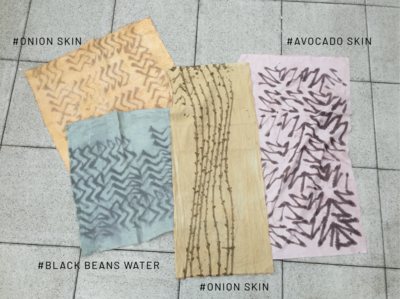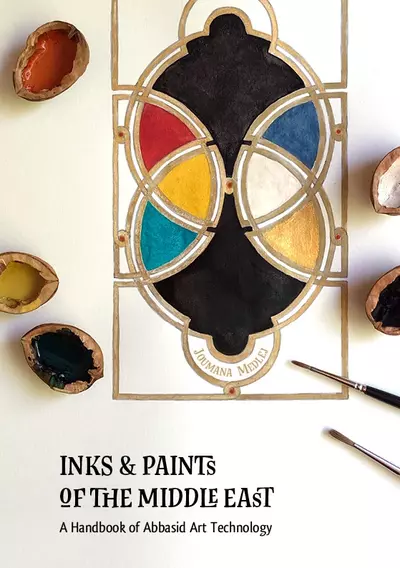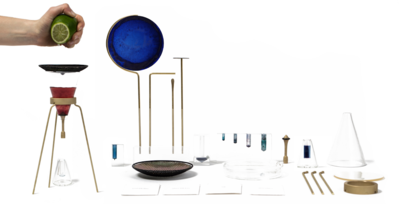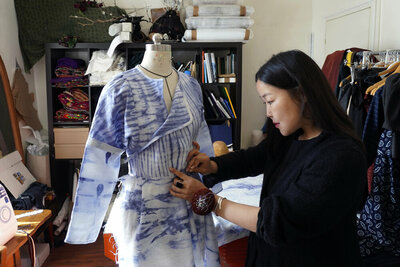4. Biochromes
📆 2020 - October 13th to 20th
What we made this week
This week's lecture was all about colour, and how to make it from natural sources. We created dyes, inks and pigments from various elements, and documented the process along the way.

Our natural colours wheel
Chemical dyes have a huge negative impact on the environment: chemicals released in rivers and nature, the workers manipulating it... All this to satisfy the demands of the fashion industry and the consumers. We need to explore alternatives for this, and accept that not everything will look exactly the same.
I liked this slide from the lecture, I think it really explains at a glance what we can do with natural colours.
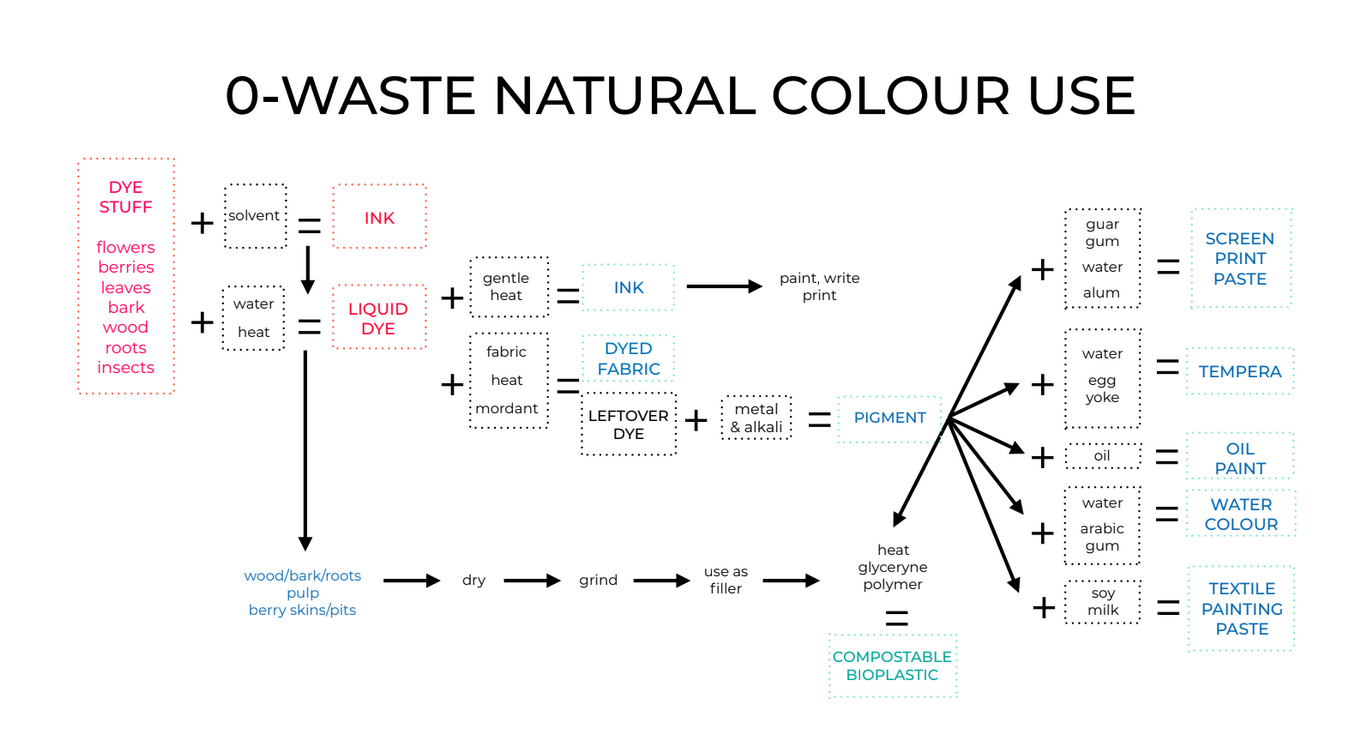
I'm amazed at what experiments around this can lead to! Below you can see examples of projects using or creating colours in a natural way, reviving very old craft techniques, and sometimes using current technology with it. From last year's Fabricademy projects, Pauline created a machine that draws on fabric which is then dyed with natural food waste dyes ; the artist Joumana Medlej creates art and supplies inspired by the Abbasid period, and wrote this book with tutorials on how to create these paints ; the french company Pili creates inks from bacteria in an industrial way ; designer Surzhana Radnaeva created this stunning dress dyed with bacteria and the shibori technique:
Natural dyes
Fabrics
We used a few different fabrics, from which we cut small samples (10x10cm). We mordanted most of them, so that the dyes would hold better in the fibers. Here are the different fabrics we had:
Cellulosic fabrics:
- A blend of linen and cotton
- Simple cotton
- A weird cotton, very densely woven and coated on one side
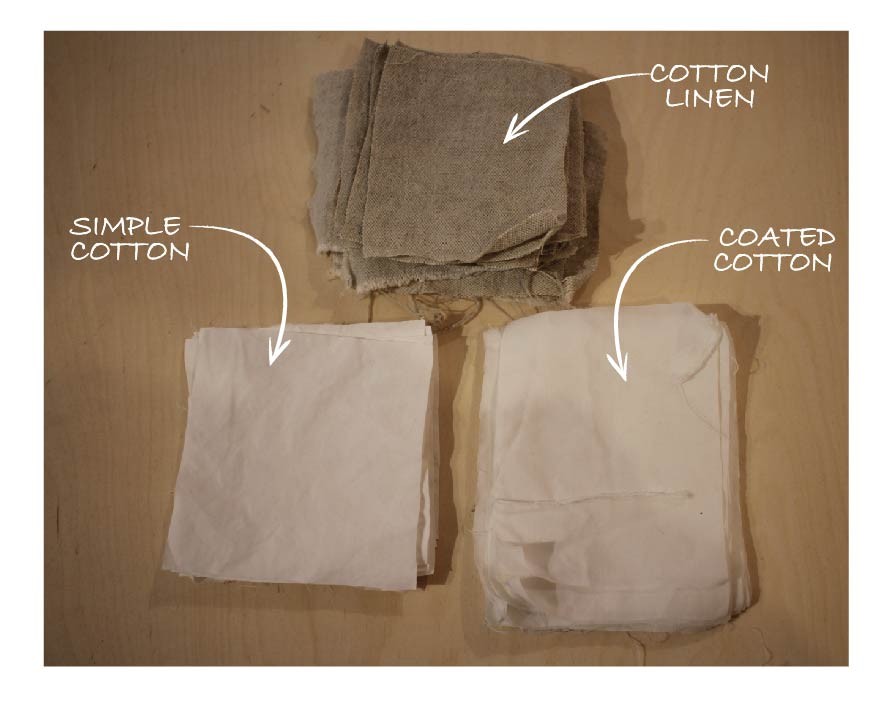
- Weighing the material, giving us the "Weight Of Fibers", WOF
- Dissolving alum in hot water, around 10-15% of the WOF
- Adding the material
- Letting it simmer through the night, and then heated it back up for approximately 1 hour
Proteinic fabrics:
- Wool cloth
- Soft silk
- Textured silk
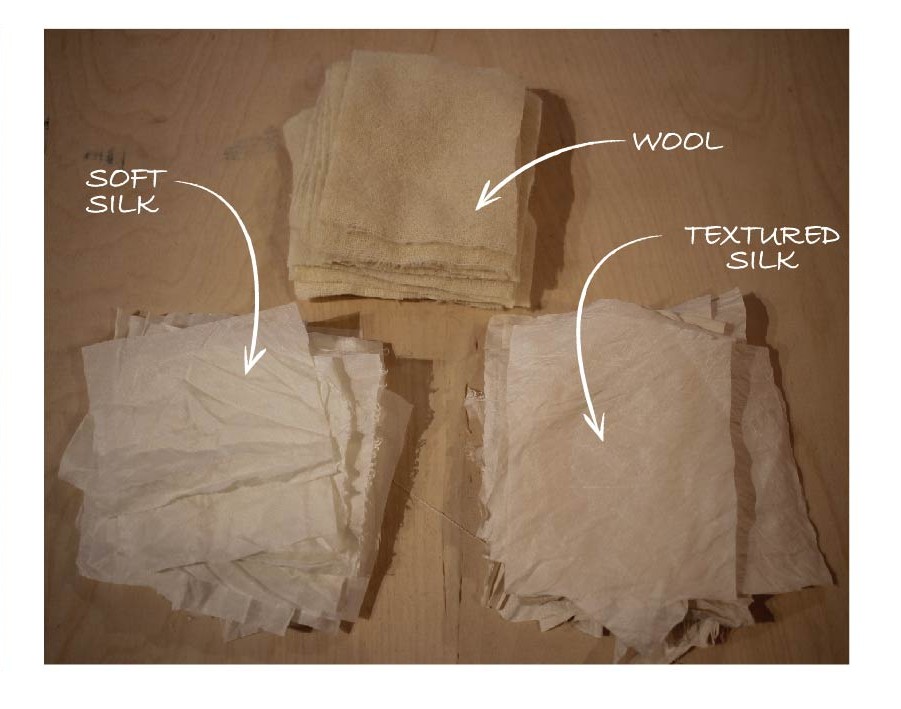
- Weighing the material, giving us the "Weight Of Fibers", WOF
- Dissolving in hot water: 8% of tartar cream, then 10-20% of alum
- Adding the material
- Letting it simmer through the night, and then heated it back up for approximately 1 hour
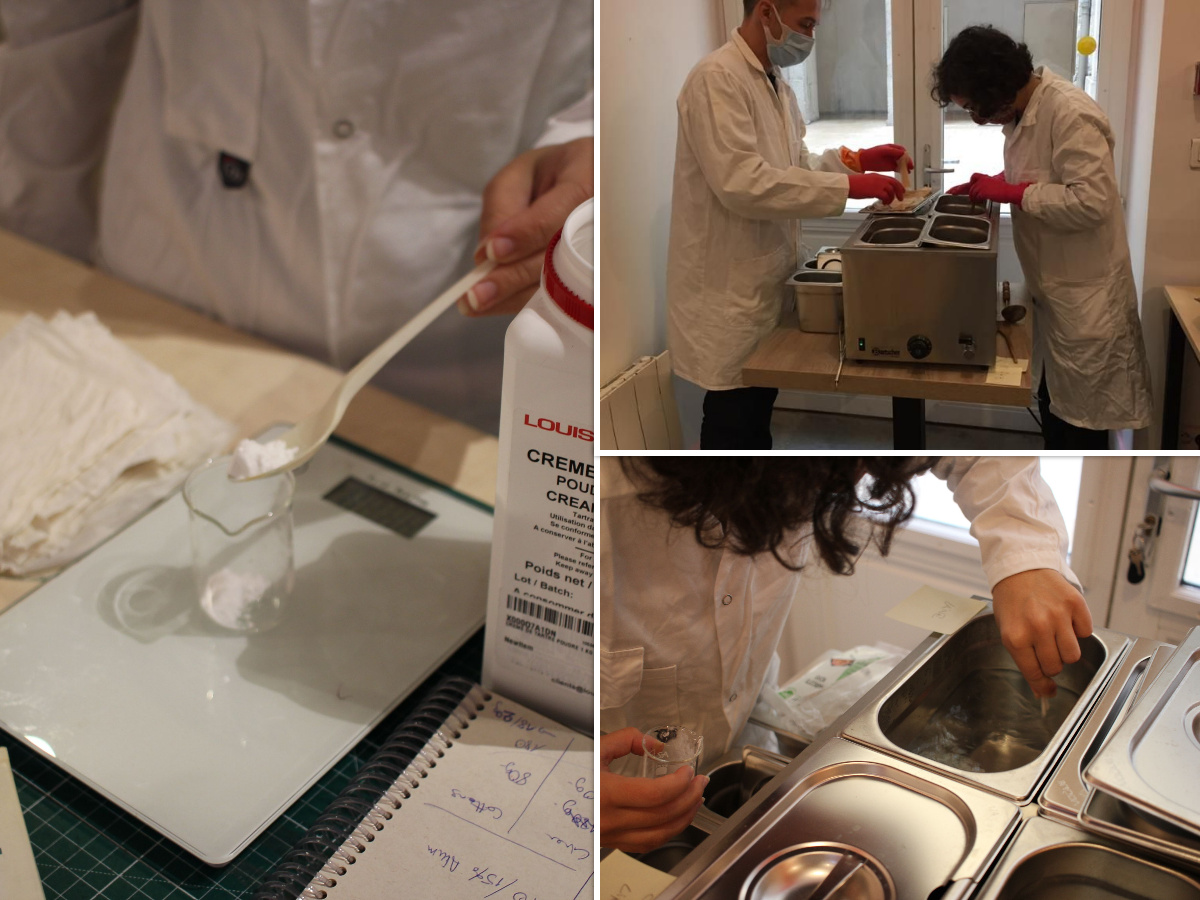
Dominique and I mordanting our fabrics
Materials
We used 4 different materials to make our dyes:
Avocado
The peels and pits of avocado, dried. We boiled 36g of peels and 3 pits in water, for approximately 1 hour. We then put the fabric in, and let it simmer.
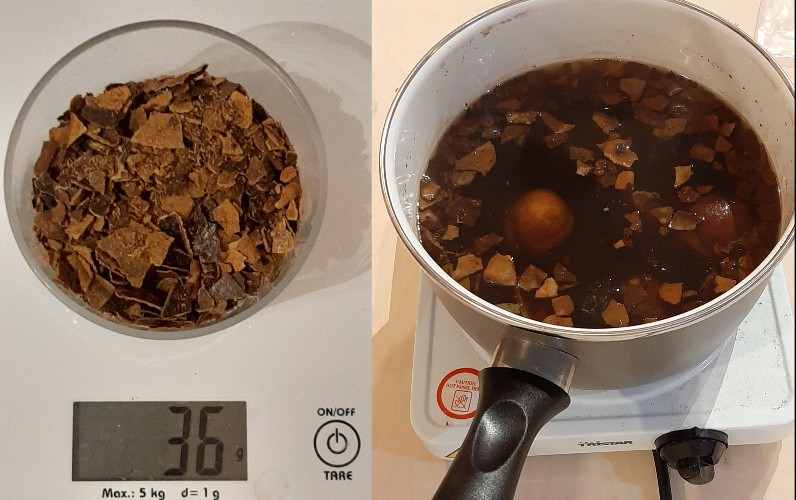
Dried avocado boiling
We took out some of the fabric after 30 minutes, and the rest after 2h45.The result after 30 minutes are quite light, but after 2h45 we get a nice light pink-beige-salmon.


We then used an iron liquor to modify a part of the dye bath, and it made them go a bit darker.

Onion
Onion peels, from yellow onions only. We had 25g of it, which is already a good volume because it's so light. We boiled them for 1 hour, and then put the fabric in. We took out some of it after 2h, and the rest after 4 hours (we might have forgotten it..!).
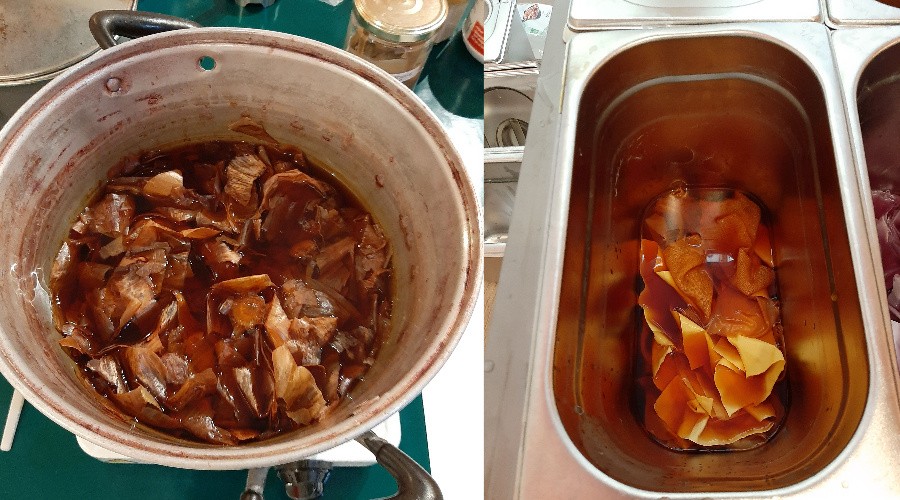
On the left: yellow onion peels boiling ; on the right: fabric in the dye bath


We used the iron liquor to modify the colour, and all of them went to different shades of brown. Overall we had good results with the onions.

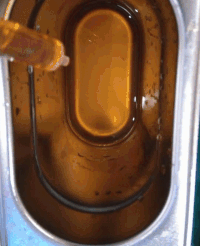
Modifying part of the onion bath with iron
Red cabbage
A small quarter of red cabbage, cut in small pieces, weighing 160g. We boiled it for 1 hour and then put the fabric in.
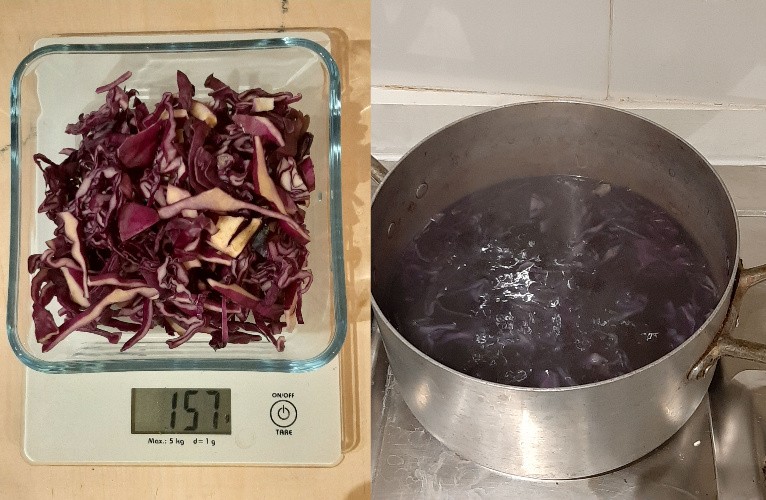
Red cabbage boiling
We let the fabric in for almost 3h, but the result was not very pronounced. We got better resulsts after post-mordanting, especially with iron liquor, where we get nice blues.


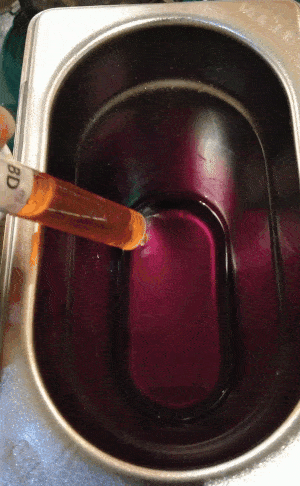
Modifying part of the cabbage bath with iron
We also tried with soda, which made it turn to the green side:

Black beans
Half a small package of black beans (approximately 200g), that we let in cold water for 24h before putting the fabric in.
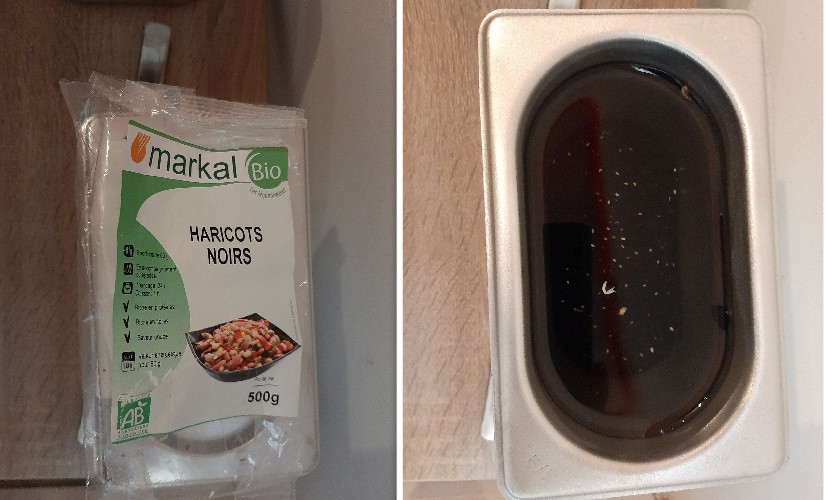
We let the fabric in for around 6h, and got shades from blue for the linen and wool, to purple for the silk. The coated cotton showed a different color on each side of the fabric.

Drawings
With Pauline, who did a talk on how to hack traditional drawing and printing techniques, we decided to try out a few different things:
Resist paste
Like for the Japanese method Katazome, we used a resist paste and stencils before dyeing some of the samples. We also used this paste with stamps that were 3D printed by Pauline:
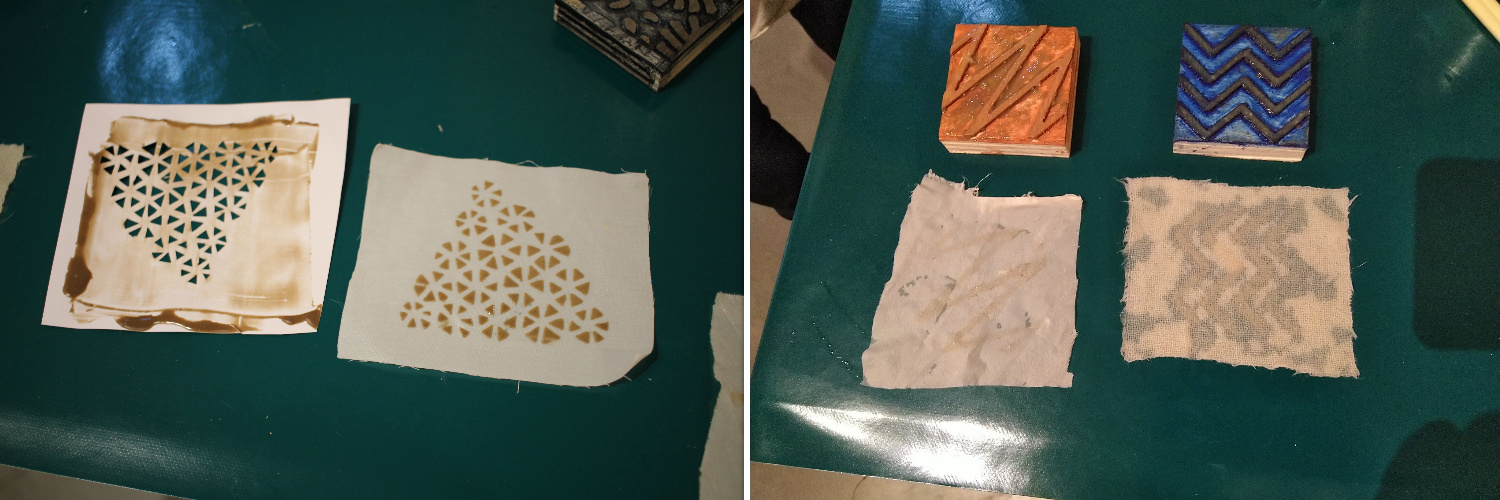
Stencils and stamps, used on silk and wool
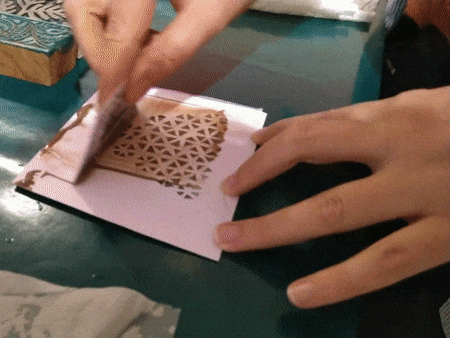
Pauline using a stencil with the resist paste
- 3 parts clay
- 2 parts arabic gum solution (50/50 water and arabic gum, with honey to preserve)
- 1 part water
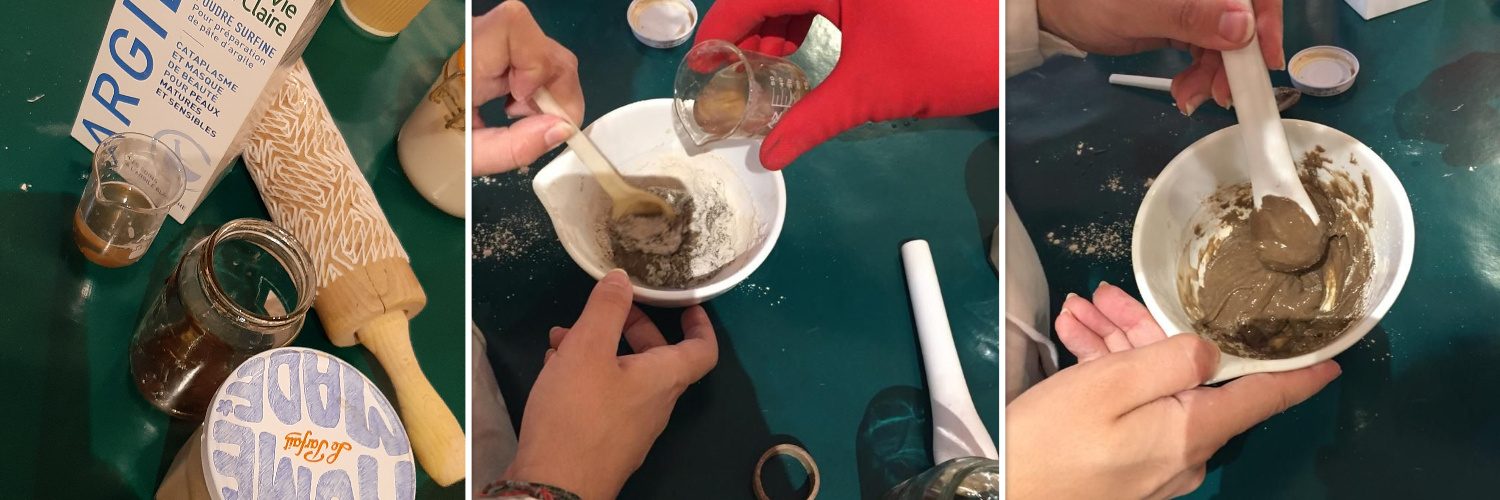
We then let these samples dry, and put them in the black beans dye bath and let them sit overnight.
We chose the black beans dye for this technique, because it is a cold bath, and the resist paste cannot be put in a hot dye bath. This technique would work with an indigo bath, for example.
The results were not great, probably because the black beans bath was starting to get old, or because we did not let them dry enough before dyeing them. On one of them we can see where the paste was, but it's very faint.
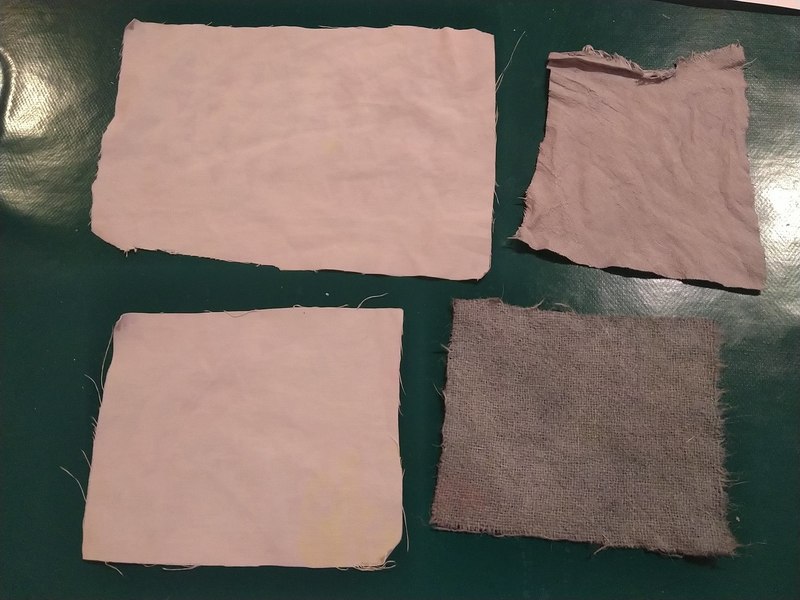
Iron liquor
We then used iron liquor, in two different ways:
- Iron liquor + guar gum: only a very small amount of guar gum is needed to turn the liquor into a sort of gel. We let them dry, and then dyed them in the onion bath.
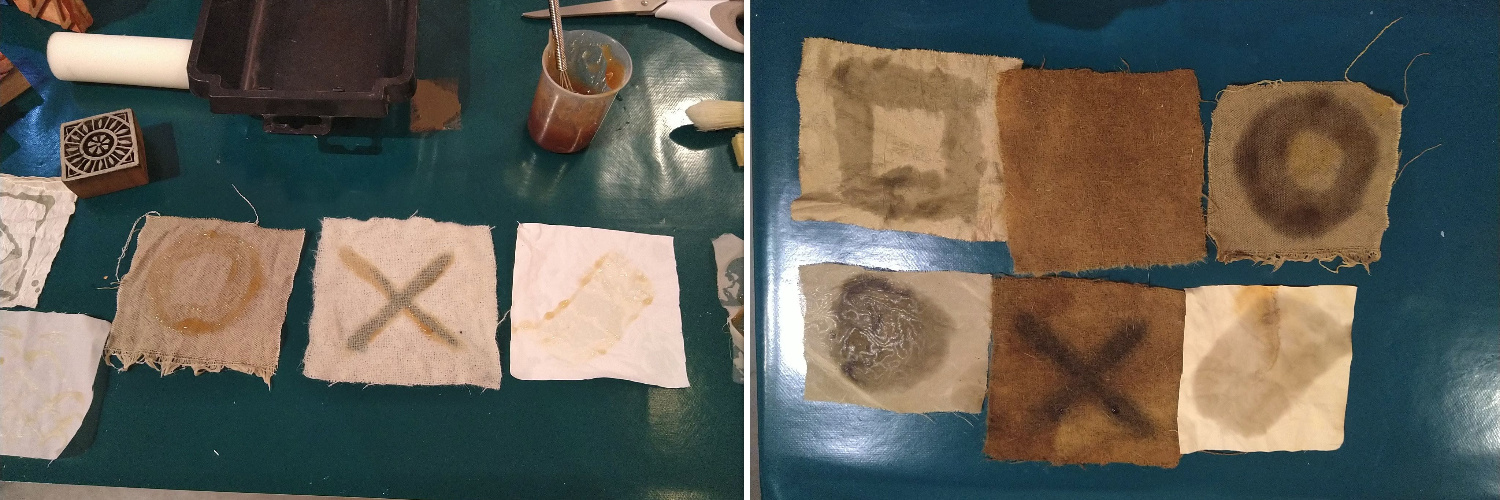
- Iron liquor + resist paste: we took some of the resist paste from above, and added some iron liquor to it. We used stamps and stencils to mark already dyed fabric (from the onion bath). After drying and washing, the result can be seen from both sides of the fabric.
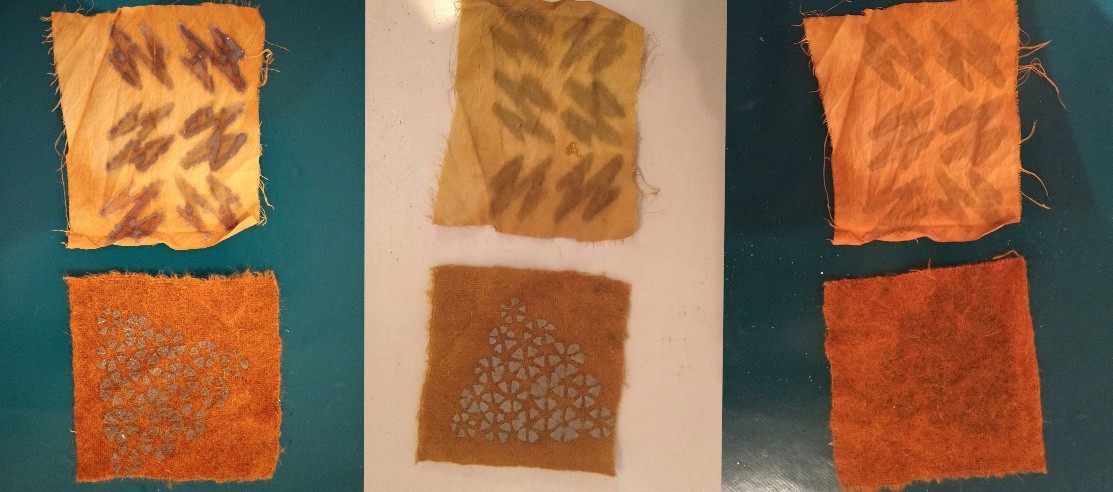
Wax
Next we mimicked the batik technique, by pouring hot bee wax on some samples, with a specific wax pourer.
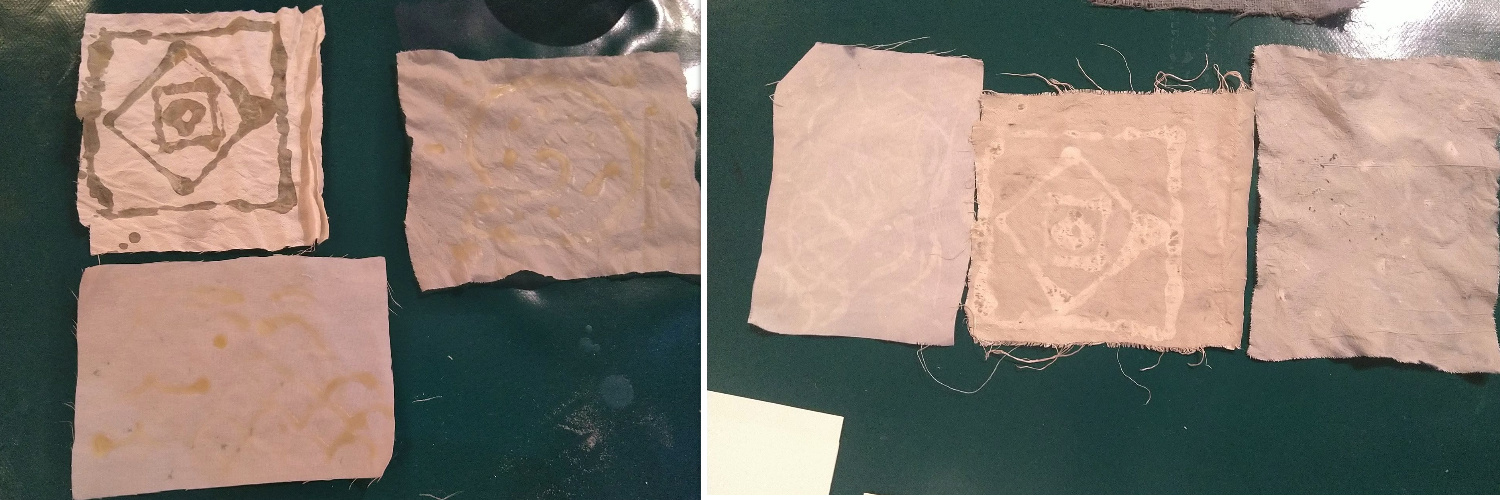
We also dyed these in the black beans overnight, and the result was okay, but when rinsing the was with hot water, the colour of the dye was already starting to wear off.
Turmeric paste
Our last test was to try direct printing with tumeric paste. Pauline had made this paste by mixing tumeric root, and adding to it a screen printing paste as a basis.
We stuck a 3D printed pattern to a rolling pin, and rolled it in tumeric paster, then on a piece of silk.
The result was not very convincing; the 3D printed pattern probably has too thin edges, and the plastic does not take the dye well. We can still see the printing after it has dried, but it is not very regular.
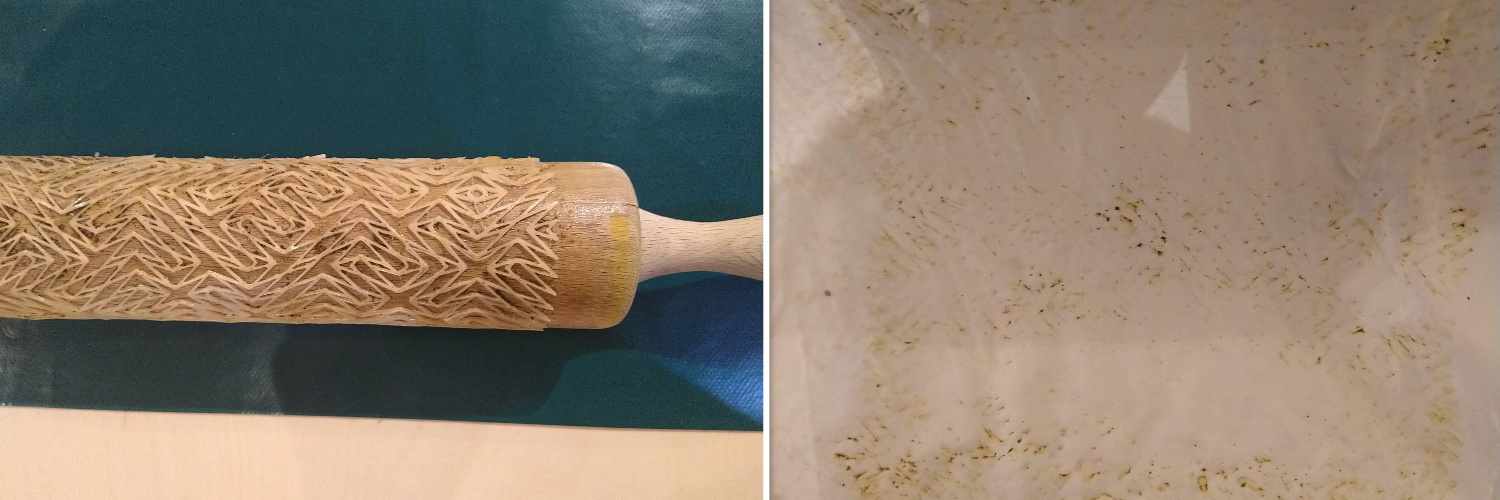
Inks
We tried ink making with 2 of our dye baths: red cabbage and onion peels.
- Let the bath reduce a little bit on heat
- Add some arabic gum (30% of the liquid), slowly so that it dissolves well
- Remove from heat, then try it and add different modifiers to it
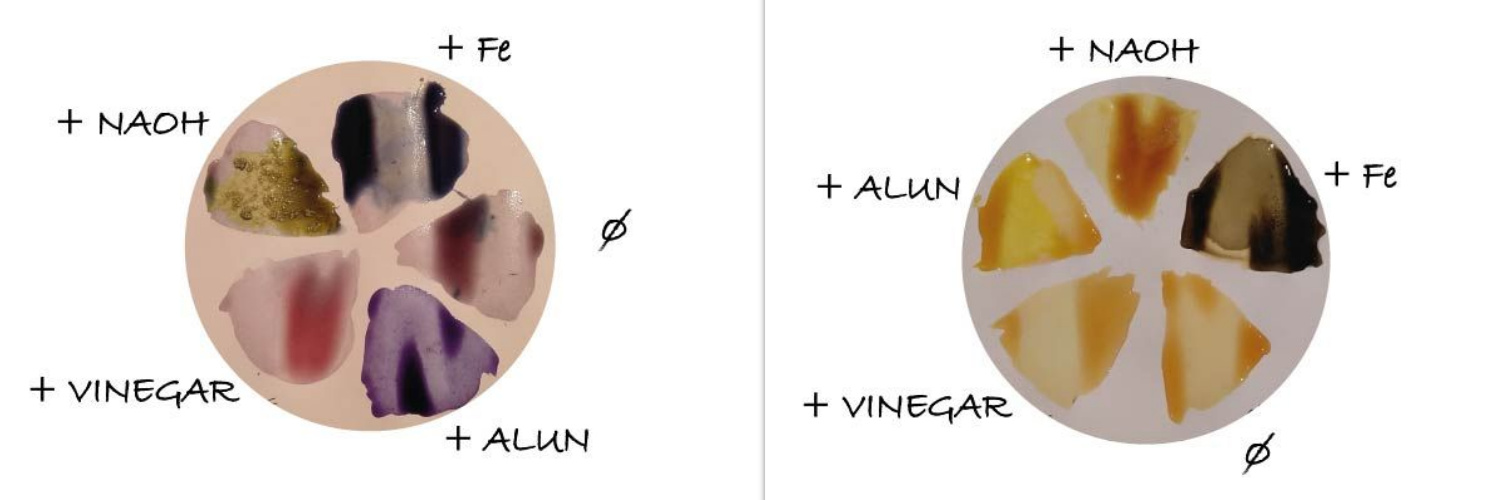
On the left: red cabbage inks ; on the right: onion peels inks
We also experimented with inks prepared by Pauline, where she mixed tumeric and hibiscus with ethanol:
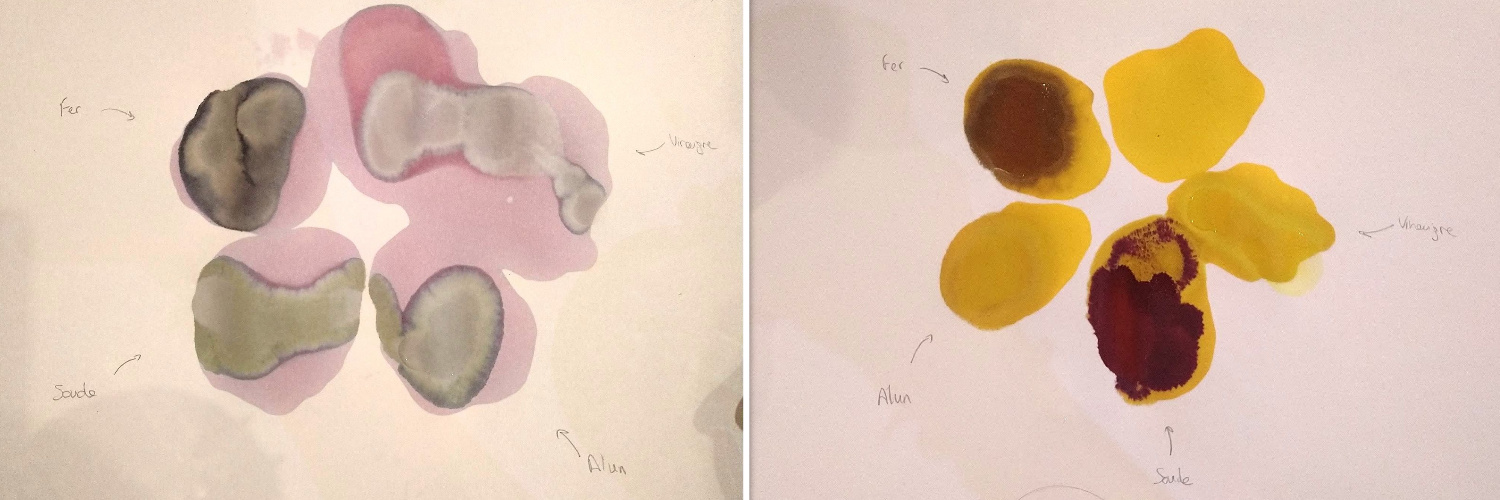
On the left: hibiscus ethanol inks ; on the right: tumeric ethanol inks
I was very happy to make inks again: I had previously followed a workshop with artist Grégoire Fournier, creating inks from different sources (different local flowers, onions peels, etc)
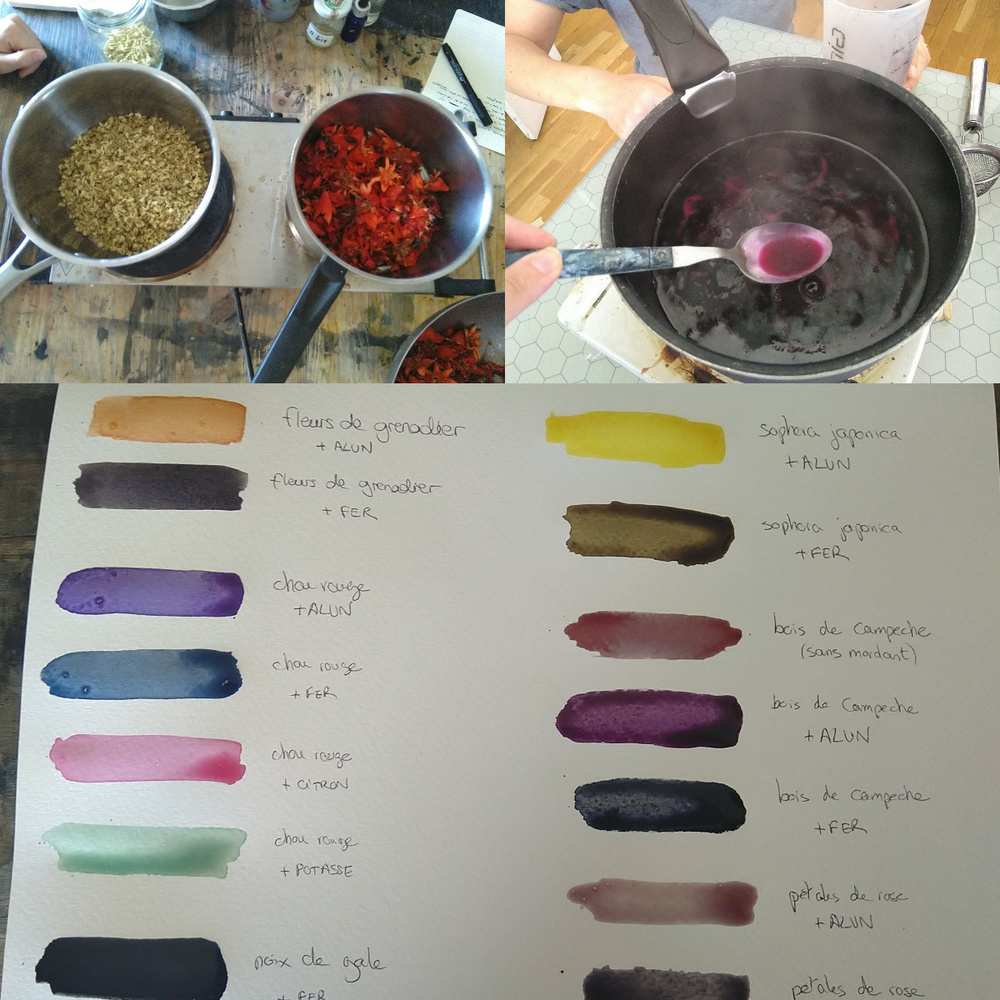
This was last spring, and as a few months had passed, I wanted to see if the inks had held well (as I haven't been using most of them recently). I made a color chart with all of them. Some of them darkened, but overall they're still great to use!
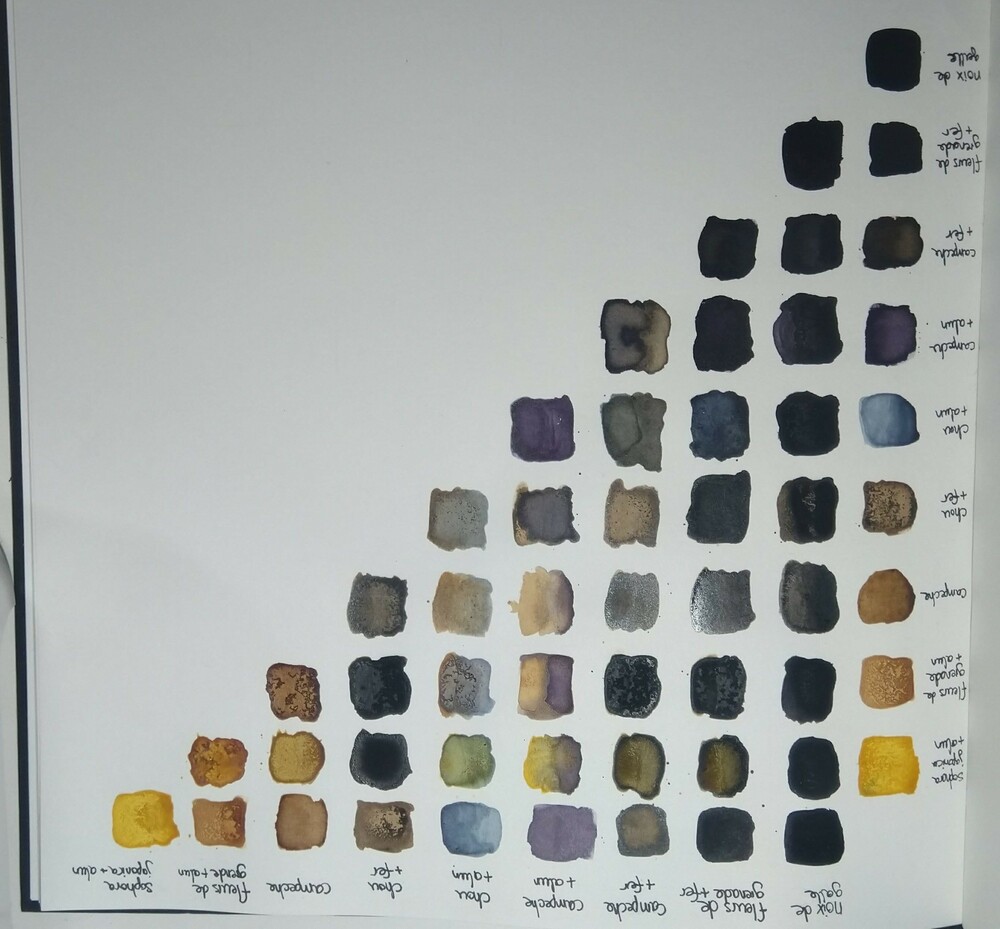
Pigments
With the leftover dye baths, we followed Cecilia's recipe to make lake pigments with 3 of our dye baths. We followed this process:
- Melting 20g of alum in hot water
- Melting 5g of soda in hot water
- Adding the alum to the dye bath
- Adding the soda (slowly!) to the dye bath, to precipitate it
- Watch it rise!
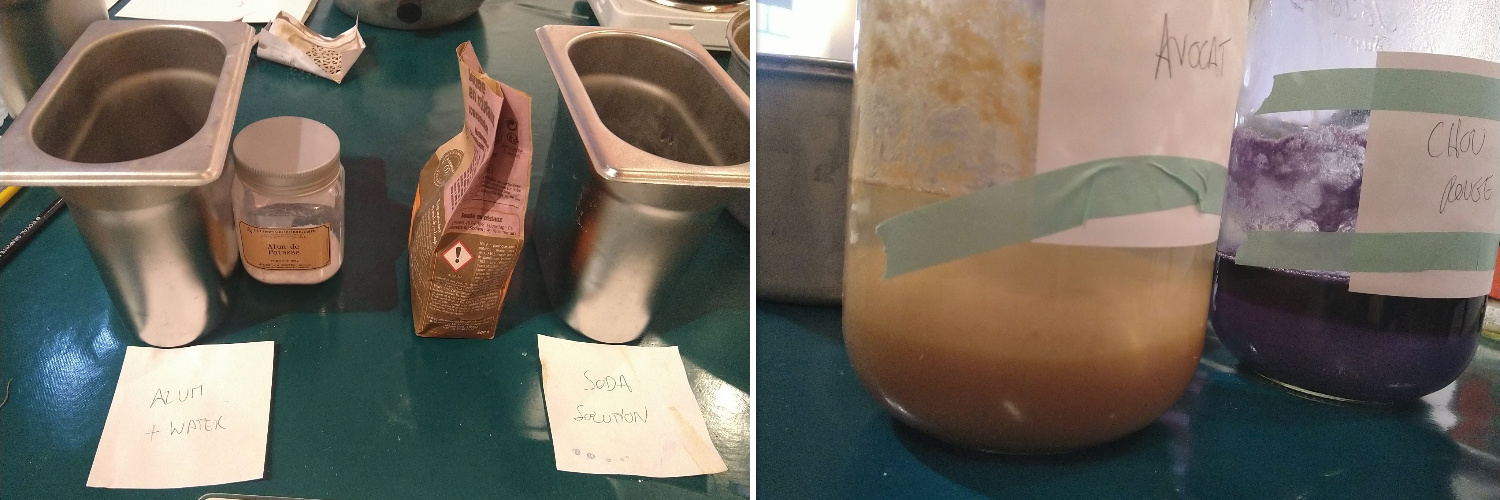
Precipitating the avocado and red cabbage juices with alum and soda
We let them sit for a while, so that the phases were separate, and then we filtered. We are now waiting for it to dry! I will add the pictures and the rest of the process as soon as we are done drying and grinding them.
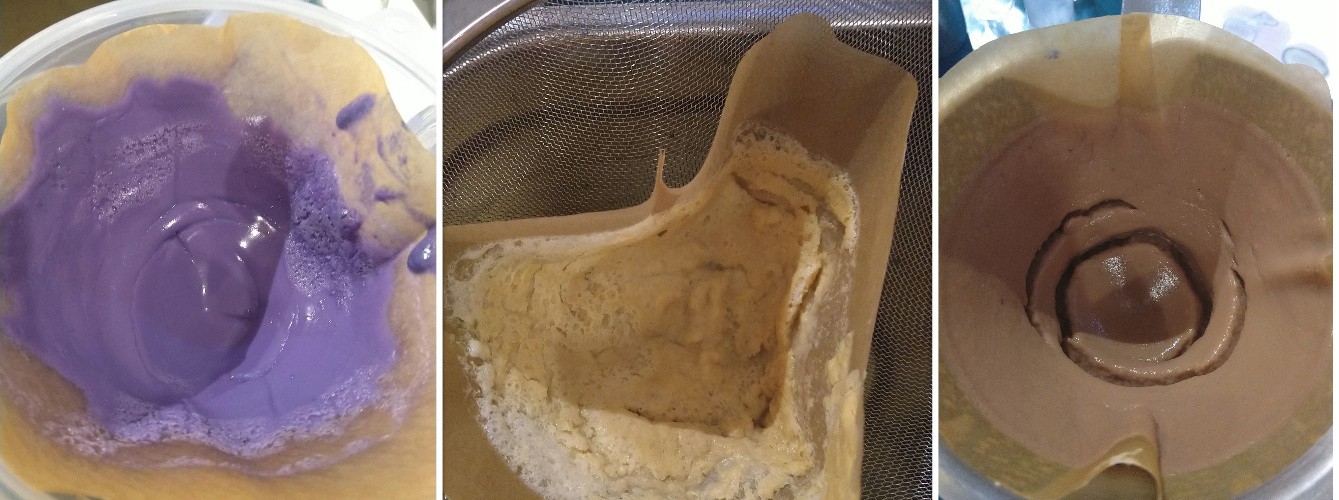
From left to right: red cabbage, onion peels and avocado
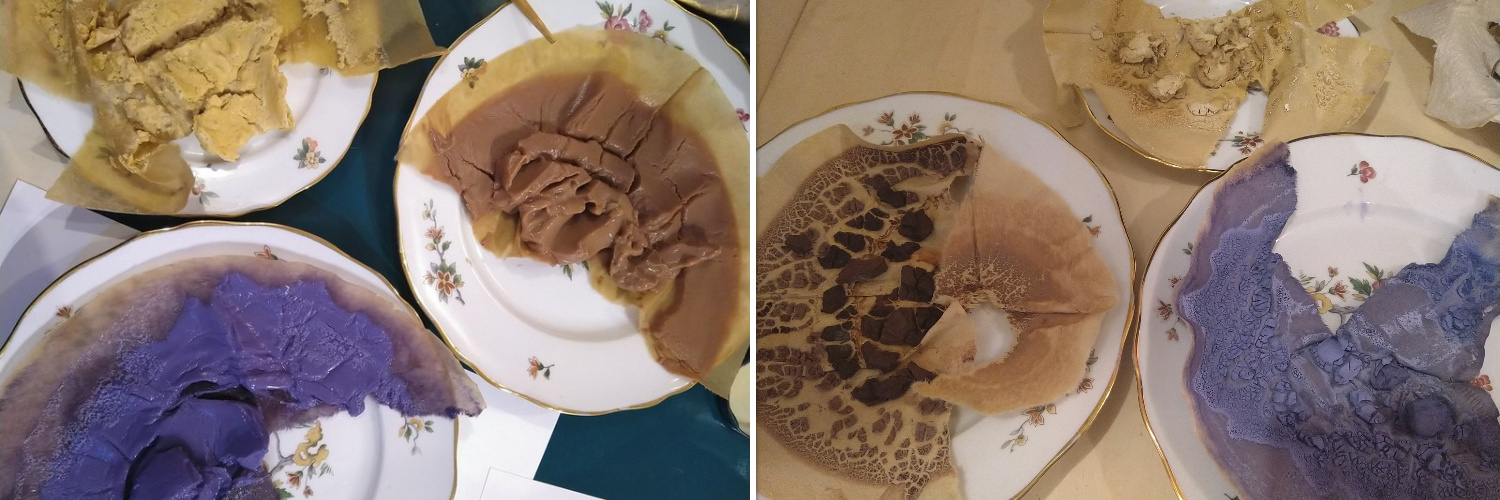
Two stages of the pigments drying
After the pigments were done drying, we grinded them :
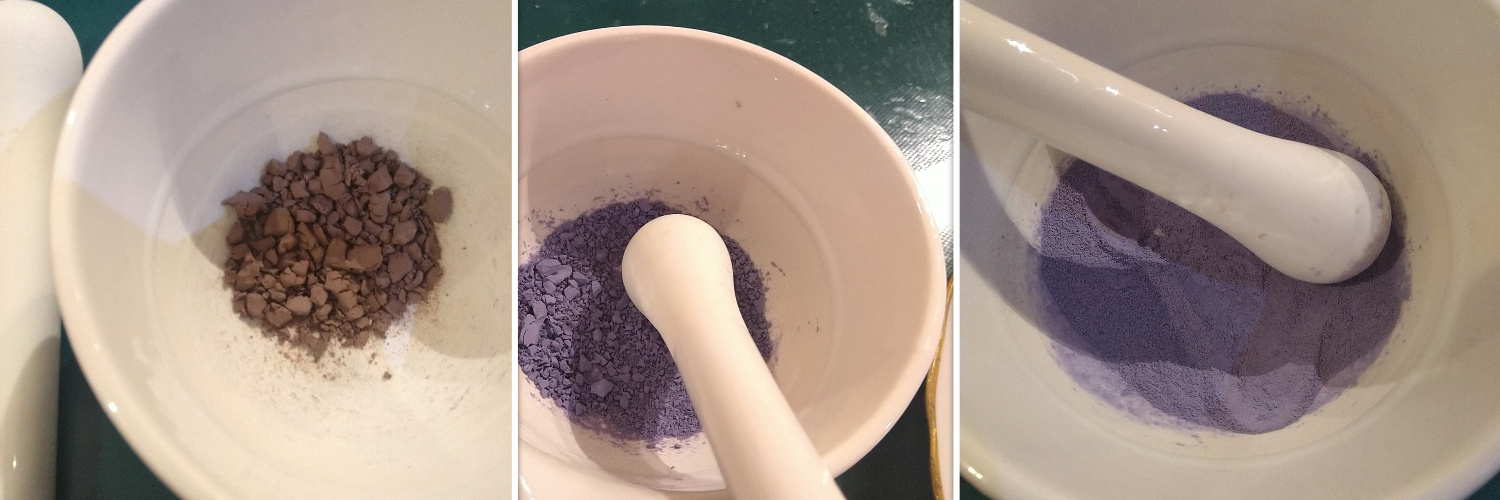
Avocado and red cabbage pigments
The onion peels pigments lost its color when drying, so we only kept the avocado and cabbage.
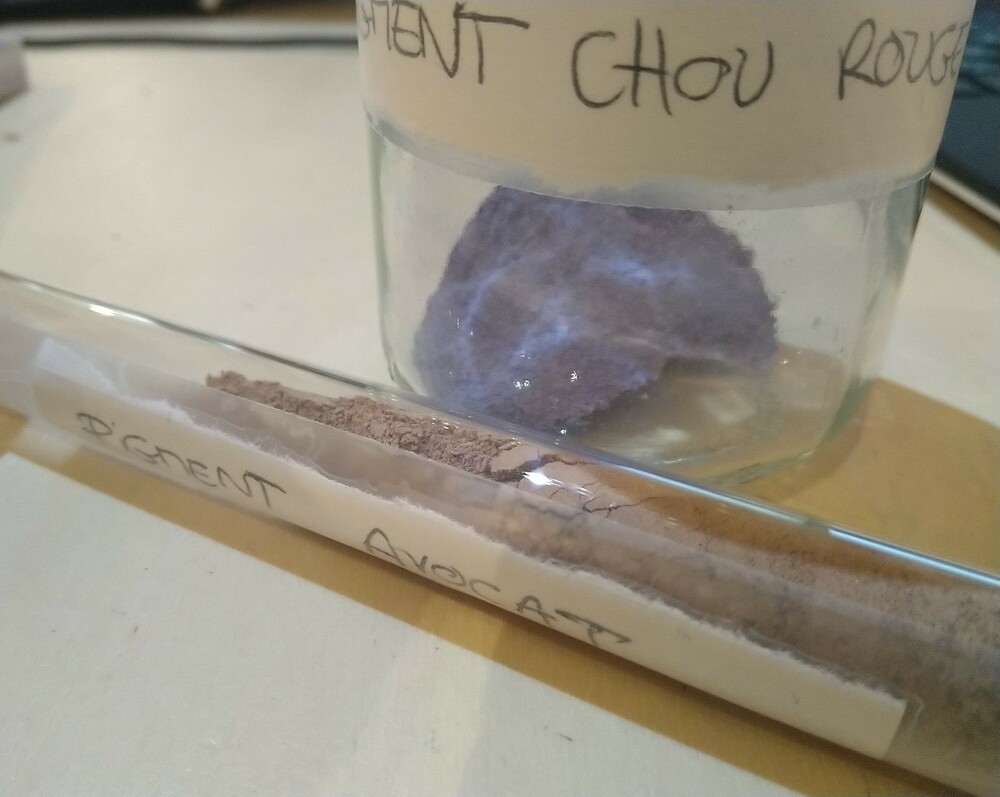
Our final, dried, avocado and red cabbage pigments
What's next
🌿 Try it again with other elements, construct a colour chart 💜💙💚💛🧡
📝 Write a knowledge base for each "dye stuff" (WIP)
🧫 Bacterial dyeing!
